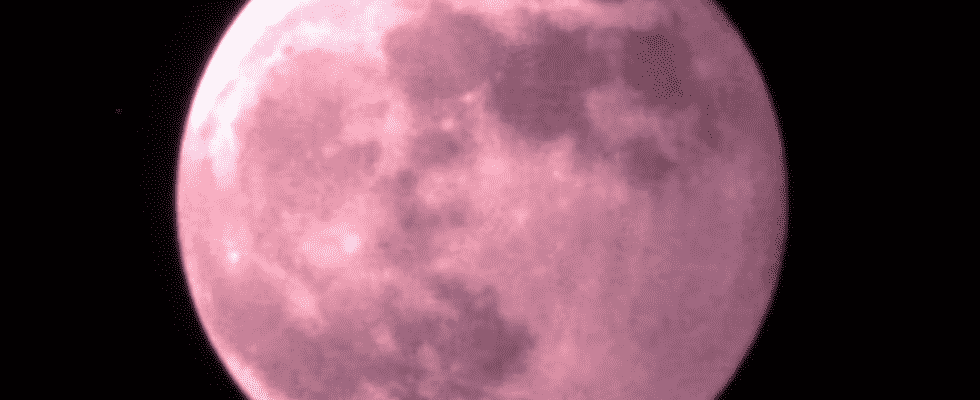A total lunar eclipse took place on November 8, 2022. Unfortunately, it was not visible from mainland France. What is a lunar eclipse (or lunar eclipse)? Is it dangerous for the eyes? Where to see her? When is the next?
This Tuesday, November 8, 2022 took place the second and last total lunar eclipse of the year 2022, after that of May 16. Unfortunately, she was not visible from mainland France. But we can see it (again) on YouTube (see video below). What is a lunar eclipse (or lunar eclipse)? Is it dangerous for the eyes to watch a lunar eclipse? Like a solar eclipse? When will the next one be?
Definition: what is a lunar eclipse?
A lunar eclipse occurs when the Moon passes through the shadow of the Earththe latter then interposing between the Sun and the Moon, blocking all or part of the solar radiation which illuminates the Moon, indicates the Institute of Celestial Mechanics and Ephemeris Calculation (IMCCE) on its website.
► A lunar eclipse is total when the Moon completely crosses the Earth’s shadow. The eclipse of November 8, 2022 is said total, that is to say that the star disappears completely.
► A lunar eclipse is partial when only part of the Moon enters the Earth’s shadow
► A lunar eclipse is penumbral (rare phenomenon) when the Moon crosses only the penumbral zone of the Earth.
Diagram of a lunar eclipse
On the diagram below, we see that the moon passes behind the Earth, in other words, “it eclipses” behind the Earth. We don’t see her anymore.
Is the eclipse of November 8, 2022 visible in France?
No. The lunar eclipse is invisible from mainland France. On the other hand, it is visible from New Caledonia and French Polynesia. This lunar eclipse is fully visible from the Pacific Ocean and most of North America.
Image: where to see the lunar eclipse of November 8, 2022?
The total lunar eclipse of November 8, 2022 began in France at 11:16 a.m., to peak at 11:59 a.m. and end at 12:41 p.m. In France, it was not visible. However, it is possible to see the images on YouTube. A live was made from Hawaii by the media Time and Date. At its peak, the lunar eclipse was red in color (see photo below).
Is a lunar eclipse dangerous for the eyes?
The lunar eclipse is harmless and is not harmful to the eyeseven when visible to the naked eye, unlike the solar eclipse which it is dangerous for the eyes when it is looked at without protection, explains the French Association of Astronomy (AFA) on its website. However, for more comfort, it is possible to use binoculars or a telescope to watch it (when it is obviously visible).
Do you need special glasses to see a lunar eclipse?
No, not necessarily since the lunar eclipse is not dangerous for the eyes. It can therefore be viewed with the naked eye, without fear of adverse consequences for life and without having special glasses.
Aspect: What does a lunar eclipse look like?
During a total lunar eclipse, light rays passing through the Earth’s atmosphere are deflected by atmospheric refraction and illuminate the Moon. This luminous flux, closer to the center of the Moon, is manifested by a reddish coloring, which somewhat evokes the appearance of the sky during a sunset. The other regions of the Moon are rather gray. Appearance and colors vary with eclipses and depend on atmospheric weather conditions.
How often does a lunar eclipse occur?
There is on average 2 lunar eclipses per year. Some years there are up to 5.
When will the next lunar eclipse take place?
The next solar eclipse will be on May 5, 2023, according to the Lune-Pratique website. It will bea penumbral lunar eclipse, so not total. Then you will have to wait for the October 28, 2023 to see a partial lunar eclipse.
Source : The total lunar eclipse of November 8, 2022, IMCCE / Site of the French Astronomical Association (AFA)

